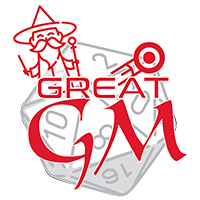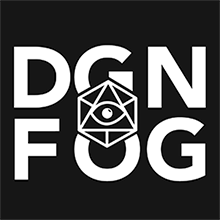Baldur's Gate Today
This gazetteer describes the independent city of Baldur’s Gate as things are as of 1492 DR. (Current year is 1498)
The original wall ringing the Upper City still stands, and a second defensive wall now rings the Lower City. The Outer City, a collection of hastily made structures and shantytowns, runs along the River Chionthar.
While the Outer City might seem the most lawless, every district of Baldur’s Gate has its own threats. In the Upper City, patriar families and Government officials jostle to secure their positions. Many are not above using private agents to acquire blackmail material, sabotage public appearances, or even frame innocents to secure power. The victims of these plots, and officials who want a fair and honest legal system, must resort to hiring their own agents to unearth conspiracies, break out unfairly imprisoned citizens, and obtain evidence the Flaming Fist cannot.
The Upper City’s political intrigues and the Outer City’s violence spills over into the Lower City, the city’s middle ground. Rampant crime, class grudges, foreign threats, and economic pressures leave many Baldurians feeling trapped within their own homes. Flaming Fist patrols react to threats with indiscriminate violence, doing little to make citizens feel safer. As a result, in recent years many citizens have started banding together in crews. These counter-gangs align along professional or neighborhood affiliations, doing their best to protect their territories. While this has given some of the city’s people a way of feeling more in control of their lives, it’s also increased the number of armed citizens on the streets. Whether the Lower City is actually safer after the formation of crews remains an open question.
In the Outer City, all the world washes against the city’s gates. Here crime and poverty are contrasted by wonders from afar and the riches of cultures across Faerûn. The mix of wanderers and refugees remains in constant flux, with communities forming and disbanding on a monthly basis. None can possibly keep track of all the cultural conventions or the dangerous — sometimes outright evil — religious practices observed in the Outer City. As a result, Baldur’s Gate has widely adopted a “do no harm” policy when it comes to faiths and organizations operating in the city. Any group is welcome to operate openly so long as the city’s important citizens aren’t harmed.
Beyond all its dangers, Baldur’s Gate is an adventurer’s city, a place where a sword-for-hire can find a rich patron, join a secret guild, stalk killers for a bounty, or come to the aid of desperate citizens. Good-hearted champions fight against corruption and bring murderers to justice, while less moral mercenaries find a good price for their services. The city offers opportunities as well as the most reliable and ruthless market on the Sword Coast. Information, treasures, secrets, and souls can be bought or sold for the right price.
As a great hero of Baldur’s Gate once said, “Watch your step in the shadows. Watch your back in the light. Win a prize beyond your wildest dreams or disappear into forgotten history. Every day your life is on the line. Every day you could become a legend. Welcome to Baldur’s Gate.”
BALDUR’S GATE AND ITS COAT OF ARMS
Population: 125,000 (predominantly humans)
Government: Plutocracy, helmed by the Council of Four and Parliament of Peers
Defense: Flaming Fist mercenaries, the Watch
Commerce: Dyes, fish, imports from Chult, mercenaries, nautical supplies
Organizations: The Guild, neighborhood crews, trade guilds
Religions: Gond, Tymora, Umberlee, any other law-abiding faith, cults of the Dead Three
The Baldur’s Gate coat of arms represents the city’s role as a hub for river and ocean trade as well as nodding toward its namesake, the explorer Balduran. The symbol originated as a pirate emblem, though, and its components hold a double meaning today. Originally, the alternating bands of water beneath the ship indicated the turbulent dangers of the sea, but also the rich rewards it can bring. The crimson flags of the ship referenced the brutal life of a pirate, blood spilled on the deck or in the water. The crisscrossing ropes and canted sail symbolized the web of secrets and intrigue that mark a pirate captain’s life. Today, some optimistic souls try to recast the seal, claiming its calm waters represent the city’s desire to remain a peaceful power and the clear skies symbolize a prosperous future. But those who know the city’s history see the cunning and violence underpinning the emblem. For many, the contradictory interpretations make the city’s coat of arms all the more fitting.
The Baldur’s Gate coat of arms represents the city’s role as a hub for river and ocean trade as well as nodding toward its namesake, the explorer Balduran. The symbol originated as a pirate emblem, though, and its components hold a double meaning today. Originally, the alternating bands of water beneath the ship indicated the turbulent dangers of the sea, but also the rich rewards it can bring. The crimson flags of the ship referenced the brutal life of a pirate, blood spilled on the deck or in the water. The crisscrossing ropes and canted sail symbolized the web of secrets and intrigue that mark a pirate captain’s life. Today, some optimistic souls try to recast the seal, claiming its calm waters represent the city’s desire to remain a peaceful power and the clear skies symbolize a prosperous future. But those who know the city’s history see the cunning and violence underpinning the emblem. For many, the contradictory interpretations make the city’s coat of arms all the more fitting.
Remove these ads. Join the Worldbuilders Guild









Comments